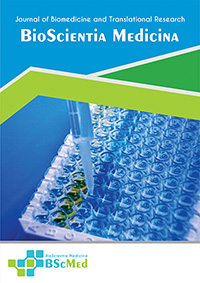Main Article Content
Abstract
Background: The inexorable rise of antimicrobial resistance (AMR) in Neisseria gonorrhoeae represents a formidable threat to global public health, jeopardizing the efficacy of last-line treatments for gonococcal urethritis (GO). Southeast Asia is a recognized epicenter for the emergence and dissemination of AMR, yet granular surveillance data from many high-risk localities remain critically sparse. This study aimed to provide a comprehensive characterization of the clinical epidemiology, frontline management practices, and patient outcomes of male urethritis at a tertiary referral center in Bali, Indonesia—a major international crossroads for tourism and migration.
Methods: A retrospective, cross-sectional analysis was conducted on the medical records of male patients diagnosed with urethritis at the Dermatology and Venereology Polyclinic of Ngoerah Hospital between January 1st, 2021, and December 31st, 2024. A rigorous screening process of 215 initial records was undertaken to identify eligible cases. Data on sociodemographics, behavioral risk factors, clinical presentation, syndromic diagnosis, prescribed pharmacotherapy, and follow-up adherence were systematically extracted and analyzed using descriptive and comparative statistics.
Results: From the initial cohort, 58 male patients met the final inclusion criteria. The cohort was predominantly diagnosed with GO (n=39, 67.2%) over non-gonococcal urethritis (NGO) (n=19, 32.8%). Patients were primarily of productive age (25–44 years, 58.6%) and reported high-risk behaviors, including multiple sexual partners (65.5%). A critical deviation from international treatment guidelines was identified: 97.4% (38/39) of GO patients received oral cefixime 400 mg monotherapy, a regimen no longer recommended for first-line use due to AMR concerns. Furthermore, a profound fracture in the care cascade was evident, with an overall loss-to-follow-up rate of 58.6% (34/58). This failure was most pronounced in the GO cohort, where 76.9% (30/39) of patients did not return for scheduled follow-up, a rate significantly higher than the 21.1% (4/19) observed in the NGO cohort (p<0.001).
Conclusion: The clinical management of gonorrhoea at this major Indonesian referral center is defined by two systemic failures: the routine prescription of a suboptimal antimicrobial monotherapy and a near-total collapse of patient follow-up. This combination, situated in a high-transience international hub, creates an unmonitored, high-risk environment for the selection, amplification, and global dissemination of antimicrobial-resistant N. gonorrhoeae. These findings signal an urgent imperative to align local therapeutic protocols with evidence-based global standards and to implement robust, innovative strategies to ensure patient retention and verify the cure.
Keywords
Article Details
As our aim is to disseminate original research article, hence the publishing right is a necessary one. The publishing right is needed in order to reach the agreement between the author and publisher. As the journal is fully open access, the authors will sign an exclusive license agreement.
The authors have the right to:
- Share their article in the same ways permitted to third parties under the relevant user license.
- Retain copyright, patent, trademark and other intellectual property rights including research data.
- Proper attribution and credit for the published work.
For the open access article, the publisher is granted to the following right.
- The non-exclusive right to publish the article and grant right to others.
- For the published article, the publisher applied for the Creative Commons Attribution-NonCommercial-ShareAlike 4.0 International License.





